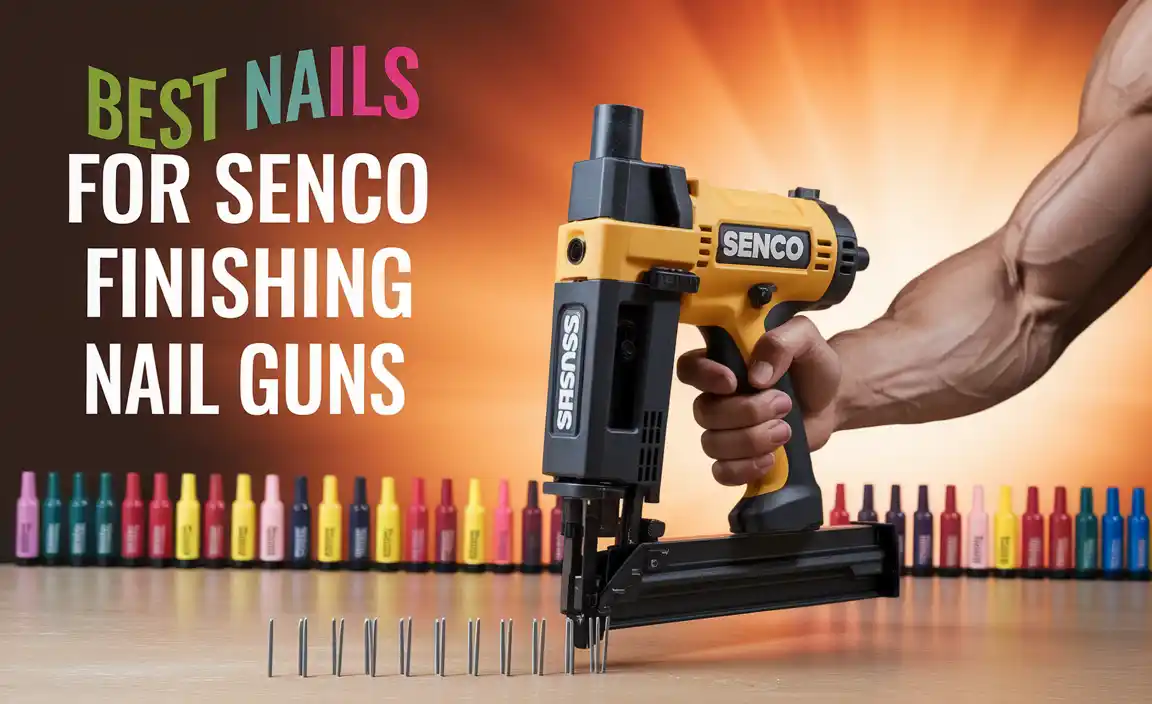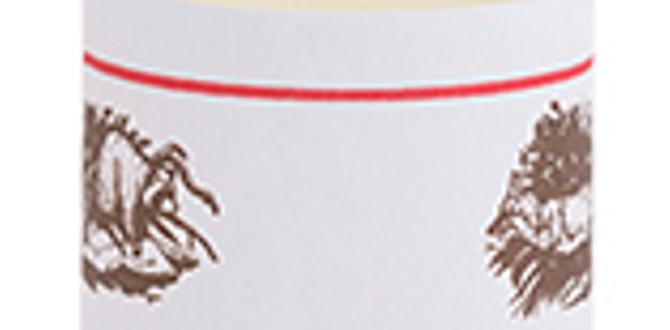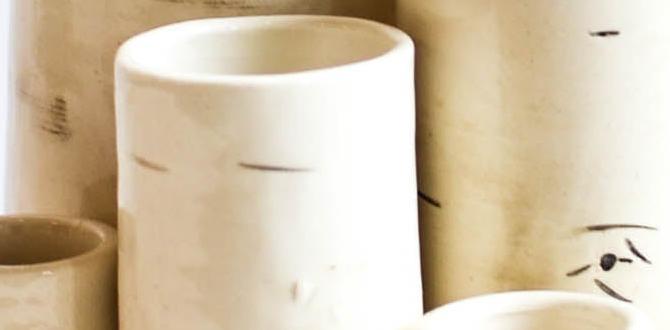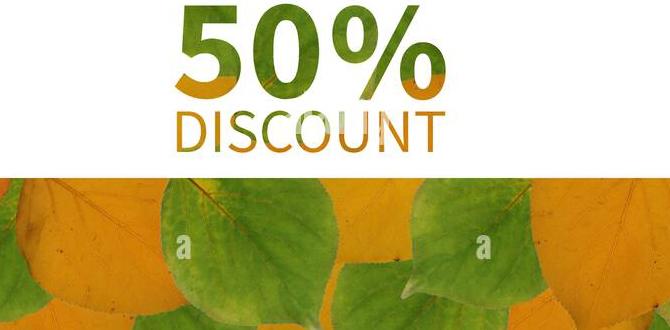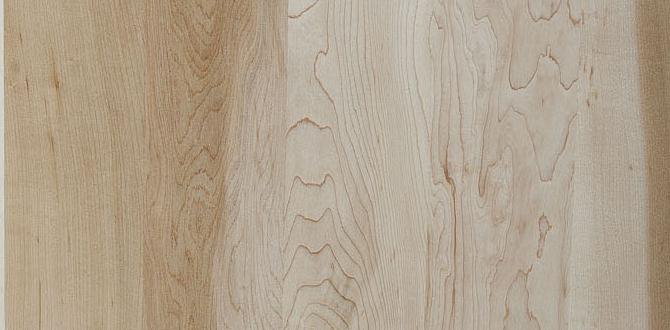Woodworking projects for summer camps offer fun, educational, and lasting keepsakes. From birdhouses to benches, simple designs build confidence and essential skills for campers of all ages. Focus on safety, basic tools, and engaging projects to make camp memorable and rewarding.
Summer camp is a time for adventure, learning, and making memories. What better way to enhance that experience than by introducing campers to the satisfying world of woodworking? Many parents and camp counselors look for activities that are not only fun but also teach valuable skills. Woodworking offers a fantastic opportunity for kids to develop creativity, problem-solving abilities, and a sense of accomplishment. Don’t worry if you’re new to this; we’ll walk you through some fantastic, beginner-friendly woodworking projects perfect for a summer camp setting. Let’s get those young hands busy creating something awesome!
Table of Contents
Why Woodworking Projects for Summer Camps?
Adding woodworking to the summer camp agenda is a brilliant idea for several reasons. It’s a hands-on activity that gets kids away from screens and into the real world. They learn to follow instructions, use tools safely, and see a project from start to finish. This process builds confidence and teaches them patience and precision. Plus, they get to take home something they made themselves – a tangible reminder of their summer fun and newfound skills!
Benefits for Campers
Skill Development: Campers learn basic carpentry skills, including measuring, cutting, sanding, and assembling.
Creativity and Problem-Solving: They can customize their projects and figure out how to overcome small challenges.
Teamwork: Many projects can be done in pairs or small groups, fostering cooperation.
Sense of Accomplishment: Completing a project provides a huge boost to a child’s self-esteem.
Connection with Nature: Working with wood connects campers to natural materials.
Safety Awareness: Learning to use tools properly instills a sense of responsibility and safety.
Safety First in the Woodshop
Before diving into projects, safety is paramount. Especially with younger campers, adult supervision is crucial. Ensure everyone understands basic tool safety rules. This includes wearing safety glasses at all times, keeping work areas clean, and knowing how to handle tools properly. For a comprehensive guide on shop safety, the Wood Magazine offers excellent resources.
Essential Tools for Camp Woodworking
You don’t need a professional workshop to start. For most beginner projects, a few key tools will suffice. Remember, using the right tool for the job makes everything easier and safer.
- Handsaws: A basic handsaw is essential for cutting wood. Western saws are common and easy to use.
- Measuring Tapes: Accurate measurements are key to successful projects.
- Pencils: For marking cut lines and measurements.
- Sandpaper: Various grits (e.g., 80, 120, 220) for smoothing edges and surfaces.
- Clamps: To hold pieces together while glue dries or while fastening.
- Hammers and Nails: For traditional joinery, or consider a homeowner-grade nailer for faster assembly.
- Screwdrivers and Screws: A good alternative to nails, often easier for beginners to control splitting.
- Drill and Drill Bits: For pilot holes, which prevent wood from splitting, especially when using screws near edges.
- Safety Glasses: Non-negotiable for everyone in the workshop.
- Wood Glue: A strong adhesive for most woodworking joints.
Genius Woodworking Projects for Summer Camps
Here are some fantastic project ideas, ranging from super simple to slightly more involved, ensuring there’s something for every skill level.
1. The Classic Birdhouse
This is a camp woodworking staple for a reason! It’s relatively simple to build and provides a lovely habitat for backyard birds.
Materials Needed:
- One 1×6 inch pine board (about 6 feet long)
- 1 1/4 inch wood screws or nails
- Wood glue
- Sandpaper
- Outdoor-safe paint or sealant (optional)
Tools Needed:
- Handsaw
- Measuring tape
- Pencil
- Drill with bits (for pilot holes and entrance hole)
- Screwdriver or hammer
- Clamps (optional)
Steps:
- Cut Your Pieces: Carefully measure and cut the following pieces from your 1×6 board:
- Front and Back: Two pieces, each 8 inches long. Cut an angle at the top of each piece for the roof pitch.
- Sides: Two pieces, each 6 inches long.
- Floor: One piece, 4 1/2 inches long.
- Roof: Two pieces, each 8 inches long. You might want one slightly wider for an overhang.
- Drill the Entrance Hole: On one of the front/back pieces (this will be the front), measure down about 2 inches from the peak and drill a hole. A 1 1/4 inch diameter is good for many small birds.
- Assemble the Box: Apply wood glue to the edges where pieces will join. Attach the side pieces to the floor piece using screws or nails. Then, attach the front and back pieces to the sides and floor. Pre-drilling pilot holes will make screwing easier and prevent splitting.
- Attach the Roof: Glue and fasten the two roof pieces to the angled tops of the front and back panels. Ensure they meet at the peak and provide some overhang to protect from rain.
- Sand and Finish: Sand all rough edges and surfaces smooth. If desired, campers can paint or seal their birdhouses with non-toxic, outdoor-safe finishes.
2. Rustic Camp Stool/Bench
A sturdy stool or small bench is incredibly useful around a campsite or in a garden. This is a great project for learning about simple leg joinery.
Materials Needed:
- Four 2×2 inch posts (about 18 inches long for a stool, 12 inches for a bench seat height)
- One 1×6 inch board for the seat (length depends on desired size – 12 inches for a stool, 24-36 inches for a bench)
- Wood screws (1 1/2 to 2 inches)
- Wood glue
- Sandpaper
Tools Needed:
- Handsaw
- Measuring tape
- Pencil
- Drill with bits (for pilot holes)
- Screwdriver
- Clamps
Steps:
- Prepare the Legs: Cut your four 2×2 posts to the desired height.
- Prepare the Seat: Cut your 1×6 board to the desired length for the seat. If you want a wider seat, you can join two boards together.
- Mark Leg Positions: On the underside of the seat board, mark where the legs will attach. For a stool, place them about 2 inches in from each corner. For a bench, you might add two more legs in the middle for longer seats.
- Attach the Legs: Apply wood glue to the top of one leg. Position it on one of the marked spots on the underside of the seat. Clamp it in place. Drill pilot holes through the seat into the leg (at least two screws per leg). Drive in the screws. Repeat for all legs.
- Add Support (Optional but Recommended): To make the stool sturdier, you can add apron pieces. Cut four pieces of 1×3 or 2×2 lumber that will fit between the legs, just below the seat. Glue and screw these in place to form a square or rectangle that connects the legs.
- Sand and Finish: Sand all surfaces, paying attention to corners and edges. A sealant or stain can protect the wood from the elements.
3. Wooden Yard Games (Ring Toss, Bean Bag Toss)
These games are a hit at any camp, promoting friendly competition and active fun. Simple designs mean campers can focus on creativity and decorating.
Ring Toss Example:
Materials Needed:
- One 4×4 inch post, about 1-2 feet tall (for the base)
- One 2×2 inch post, about 2 feet tall (for the center post)
- One 1×6 inch board, about 1 foot long (for the base top, if desired)
- Rope or thick cord for rings (or pre-made rings)
- Sandpaper
- Paint for decoration
Tools Needed:
- Handsaw
- Measuring tape
- Pencil
- Drill with hole saw or large drill bit (for center hole)
- Screwdriver
- Wood screws
- Clamps
- Paintbrushes
Steps:
- Prepare the Base: Cut the 4×4 post into a desirable length, perhaps 18 inches. Cut the 1×6 board into a square, maybe 10×10 inches, if you want a decorative top to the base.
- Prepare the Center Post: Cut the 2×2 post to about 2 feet.
- Assemble the Base: If using the 1×6 top, center the 4×4 post on it and screw it from the bottom of the 1×6 into the 4×4. Alternatively, the 4×4 can stand alone.
- Attach the Center Post: Find the center of the base (either the 4×4 top or a marked spot on the 4×4 post), drill a starter hole, and then using wood screws from underneath the base, attach the 2×2 center post securely. Make sure it’s straight.
- Create Rings: If making rope rings, cut lengths of rope and form them into circles, securing the ends with glue or by tying them tightly. You can also buy wooden rings.
- Decorate: Let the campers paint the posts and rings! This is where their creativity shines.
4. Camp Sign or Message Board
A personalized sign is a great way for campers to mark their cabin, create a message board, or even make a sign for a camp activity.
Materials Needed:
- One 1×8 inch board, length varies by desired sign size (e.g., 18-24 inches)
- Two 1×3 inch boards for side supports/hanging strips (length to match sign width)
- Wood screws
- Sandpaper
- Paint or wood stain
- Eye screws or rope for hanging (optional)
Tools Needed:
- Handsaw
- Measuring tape
- Pencil
- Screwdriver
- Paintbrushes
Steps:
- Cut the Sign Board: Cut the 1×8 board to your desired size.
- Cut the Support Strips: Cut the two 1×3 boards to be the same length as the width of your sign board.
- Assemble: Lay the sign board flat. Place the two 1×3 support strips horizontally across the back of the sign board, one near the top and one near the bottom. Ensure they are flush with the sides of the sign board.
- Attach Supports: Drill pilot holes and screw through the 1×3 strips into the back of the main sign board. This adds strength and a place to attach hanging hardware.
- Sand and Finish: Sand all surfaces until smooth.
- Decorate: Campers can paint their names, cabin numbers, camp themes, or any messages they like. They can also add eye screws to the top support strip for hanging with rope, or drill holes in the ends of the support strips.
Table: Project Difficulty and Time Estimate
Here’s a quick look at how these projects stack up:
| Project | Estimated Time (per camper) | Difficulty Level (Beginner) | Ages |
|---|---|---|---|
| Birdhouse | 2-3 hours | Easy | 8+ |
| Camp Stool/Bench | 2-4 hours | Medium | 10+ |
| Yard Game (Ring Toss) | 1-2 hours (project build) + decoration time | Easy | 7+ |
| Camp Sign/Message Board | 1-2 hours (plus decoration) | Very Easy | 6+ |
Tips for Successful Woodworking at Camp
Pre-cut Kits: For younger campers or shorter sessions, consider pre-cutting all the pieces for a project. This allows them to focus on assembly, sanding, and decorating.
Demonstrate Safely: Always demonstrate how to use each tool safely before campers try it themselves.
Keep it Simple: Start with basic designs. The goal is for campers to experience success and enjoyment, not to build complex furniture.
Embrace Imperfections: It’s okay if the projects aren’t perfect. Focus on the learning process and the fun they had.
Provide Inspiration: Show examples of finished projects. You can also find great inspiration and plans on sites like Popular Mechanics for project ideas.
Clean Up is Key: Teach campers the importance of cleaning their tools and workspace after each session. This reinforces responsibility and safety.
A Step Up: Projects for Older/More Experienced Campers
For campers who have some experience or are a bit older (12+), you can introduce slightly more complex projects.
1. Simple Planter Box
A classic project that’s both functional and looks great.
Materials:
- 1×6 or 1×8 inch boards for sides (length varies)
- 1×6 or 1×8 inch board for the bottom
- Wood screws (weather-resistant if possible)
- Wood glue
- Sandpaper
- Optional: Corner braces for extra strength
Tools:
- Same as basic projects, potentially a miter saw for angled cuts if available and supervised.
- Drill for pilot holes.
Steps:
1. Cut Sides: Cut two long boards and two short boards to your desired planter dimensions.
2. Cut Bottom: Cut a board to fit the inside dimensions of the assembled sides.
3. Assemble Box: Glue and screw the side pieces together to form a rectangle or square. Pre-drill pilot holes.
4. Attach Bottom: Flip the box upside down and attach the bottom board with glue and screws around the perimeter.
5. Add Drainage: Drill several holes in the bottom for drainage.
6. Sand and Finish: Smooth all surfaces. Apply a sealant if it will be exposed to weather.
2. Basic Shelf Unit
A simple wall shelf can be a rewarding project.
Materials:
- 1×8 or 1×10 inch boards for shelves
- 1×3 or 1×4 inch boards for cleat and support
- Wood screws
- Wood glue
- Sandpaper
Tools:
- Handsaw or power saw (with supervision)
- Measuring tape
- Level
- Drill for pilot holes
- Screwdriver
Steps:
1. Cut Shelves: Cut your shelf boards to length.
2. Cut Cleat and Support: Cut a piece of 1×3 or 1×4 to the same length as your shelf. This is the “cleat” that attaches to the wall. Cut one or two shorter pieces to act as supports under the shelf, or use decorative shelf brackets.
3. Assemble Support Structure: If using simple supports, attach them to the underside of the shelf board using glue and screws.
4. Attach Cleat: The wall cleat will be attached to the wall later.
5. Sand and finish: Sand all parts smooth.
6. Installation: The cleat is mounted to the wall (ideally into studs for strength), and then the shelf unit is placed on top, often secured through the shelf into the cleat.
Frequently Asked Questions (FAQ)
What are the safest woodworking tools for beginners?
For very young children or absolute beginners, sandpaper, pencils, and measuring tapes are the safest. For actual construction, sharp handsaws (with strict supervision), hammers, and screwdrivers are common starting points. Power tools like drills should always be used with direct adult supervision and proper training.
How do I protect woodworking projects from the weather if they’ll be used outdoors?
Once sanded smooth, apply a good quality exterior wood sealant, stain, or paint. Products labeled as “exterior grade” or “weather-resistant” are ideal. Allow finishes to dry completely before use. For birdhouses, avoid painting the interior.
What type of wood is best for camp projects?
Pine is a great choice because it’s affordable, lightweight, widely available, and easy to work with. Cedar is also good for outdoor projects as it’s naturally resistant to rot and insects, but it can be more expensive. Avoid treated lumber for projects that children will handle extensively, as it contains chemicals.
How can I make woodworking more engaging for campers?
Let them personalize their projects! Provide a variety of paints, stencils, and finishing options. Turn it into a friendly competition (e.g., “best decorated birdhouse”). Explain the purpose of the item they’re building (e.g., “this birdhouse will give a home to our feathered friends”).
What if I don’t have many tools for woodworking at camp?
Focus on projects that require minimal tools. Hand sawing, sanding, and assembling with glue and simple fasteners (like nails or screws) can be done with basic hand tools. The simplest projects might even just involve sanding and painting pre-cut wood pieces.
How long does a typical woodworking project take at camp?
This varies greatly! A very simple project like a painted sign might take 1-2 hours, including sanding and decorating. A birdhouse or a small stool could take 2-4 hours, potentially spread over two sessions to allow glue to dry. Always plan for more time than you think you’ll need, especially with beginners.
Conclusion
Bringing woodworking into the summer camp experience is an investment in fun, learning, and creating lasting memories. These projects, from the simple birdhouse to a functional camp stool, offer campers a chance to build confidence, hone practical skills, and connect with a tangible craft. Remember that safety is key, and with the right guidance and a few basic tools, you can empower young woodworkers to create projects they’ll be proud of. Whether it’s a personalized camp sign, a birdhouse to welcome wildlife, or a sturdy stool for campfire stories, the rewards of woodworking are immense. So gather your supplies, prioritize safety, and get ready to inspire some amazing creations this summer!
